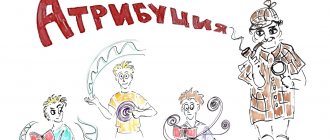Crowd psychology contains its own phenomenon. If you delve into its effect, it will be easy to understand what it is and why mass riots are sometimes created.
Every person at least once in his life found himself in a crowd, an organized group of people. At the same time, we don’t even understand that we are under the influence of competent psychologists and their actions. After all, you need to be able to manage a crowd.
Read another interesting article on our website on the topic: “Why is it bad to answer a question with a question: on etiquette, psychology .
From this article you will learn what a crowd is, its psychology and behavioral characteristics. You will also read a lot of other interesting information. It will make it clear how you can influence a person and why people are manipulated. Read on.
What is a crowd, group and riots from the point of view of social psychology: briefly
Crowd, group, riots
A crowd is a collection of people who are emotionally excited and have direct contact with each other. The main distinguishing feature of a crowd is its spontaneous formation, as well as the lack of conscious common goals among people.
When interpreting the concept of “group ,” psychology primarily relies on interdisciplinarity, that is, on the sociological as well as the psychological paradigm. Understanding group psychology and social psychology occurs through analysis that examines the social groups being tested, identifying the details that turn them into a psychological community. In turn, it allows any individual person to identify with a certain group.
From the point of view of social psychology, the basis for mass unrest can be various reasons. For example:
- Policy
- National discord
- Provocations
- Protests
As a rule, riots arise spontaneously, due to unexpected circumstances. Their main psychological feature is the large number of people taking part in them. At the same time, it is necessary to take into account the fact that the psychology of a person caught in a crowd is sharply distorted, especially at the time of an extreme situation, when the mind is exposed to strong factors. This state of a person is called “Crowd Psychology” , and is caused by blindly following the general mass. This is the main driving force behind all riots.
Crowd architecture
Before moving on to the dangers threatening in a crowd, let's understand its architecture and psychology. If you look at the crowd from a bird's eye view - for example, from a camera on a quadcopter - three main elements can be identified:
1) the core of the crowd is the place where the number of people per square meter reaches its maximum. Most often there is one core - a concert stage, a political platform, the edge of a platform; sometimes there are several cores in a crowd - multiple narrow passages, stadium ticket offices, security checkpoints;
2) the middle zone - there is already a crowd, but not yet so dense as to be dangerous; the movement of people in the middle zone mainly occurs towards the core;
3) the periphery, the outskirts of the crowd, where people are just about to join it - or are trying to get out of the crowd.
This division, of course, is conditional - in a confined space, for example during a fire in a nightclub, the core can occupy the entire available area.
2. March 6, 1953: stampede at Stalin’s funeral (Moscow). Killed: from 100 to 2000 people. The stampede occurred during a funeral in the Trubnaya Square area. All information about it is still strictly classified, so the exact number of deaths is impossible to establish.
It would seem that the safest place is the periphery, but this is partly misleading. If the crowd is limited by buildings, cars, fences, and landscape features, then people located in a relatively sparse periphery can instantly find themselves crushed by all of the above. The core of the crowd is capable of moving at a fairly high speed; Here you are standing calmly against the wall, but now you are being pressed against this wall by a couple of thousand people at once. Therefore, if you happen to find yourself in a crowd, stick to the middle lane - there is more room for maneuver.
Psychology and behavioral characteristics of a crowd, a person in a crowd
Psychology identifies several behavioral features inherent in the entire structure of a crowd or an individual within it, and manifested in several areas:
- Temperamental
- Cognitive
- Moral
- Emotionally-volitional
The crowd shows various oddities of behavior in the cognitive sphere:
- Unawareness
One of the main psychological features of the crowd is its complete unconsciousness. An isolated individual weakly listens to the voice of reason, which is why a large proportion of actions are committed in an emotional outburst, and the crowd completely denies logic and exists only by feelings. At the moment a crowd forms, especially in extreme situations, the so-called “herd instinct” begins to appear. The homogeneous takes precedence over the heterogeneous in a person - a particle of the crowd, and each individual succumbs to unconscious feelings. A person isolated from the crowd is able to suppress unconscious reflexes within himself, while the crowd is deprived of this ability.
- Imagination
The crowd is characterized by a well-developed imagination and receptivity to impressions. Images that are clear and obvious to an isolated person can capture the imagination of a crowd. These images, generated by someone in the mind of the crowd, are practically no different in their vividness from the real ones. At the same time, the imagination of people in the crowd is struck not by the facts as such, but by the way they are presented.
Another crowd effect is mass hallucinations. The mind of the gathered crowd tends to distort events:
- Features of thought processes . The crowd thinks in images. In turn, the image that appears in a person’s head begins to generate associations that are not logically connected with it. The crowd does not know how to distinguish between objective and subjective things. She doesn't think. The crowd completely rejects alien ideas; contradictions and disputes are unacceptable to them.
- Extremism. The energy of the crowd can be directed exclusively towards destruction. Within every individual there lies a dormant desire for destruction. It is dangerous for an isolated individual to succumb to destructive impulses, but once in a crowd and feeling impunity, a person easily succumbs to instincts.
Another curious feature of the crowd lies in the peculiarities of psychological as well as social phenomena that make the behavior of its participants uniform. The crowd is created on the basis of antagonism towards the object of discontent.
Once in a crowd, a person acquires several psychological characteristics that are not inherent to him as an individual. These features are of decisive importance for the behavior of a person caught in a crowd. The behavior of an individual in a crowd is determined by the following characteristics:
- Anonymity. An important feature of a person’s self-perception when falling into a crowd is a sense of anonymity. Having dissolved among people and begun to behave “like everyone else,” the individual ceases to bear responsibility for the actions he commits. This is the main reason for the cruelty that accompanies the actions of the aggressive masses. Participants in the pandemonium lose their identity and become nameless.
- Irresponsibility. Once in a crowd, an individual loses a sense of responsibility, which is always a deterrent.
- Degradation . Having become part of the crowd, the individual seems to decline in development. Even being a cultured person in everyday life, a crowd member can turn into a “barbarian.” The person becomes violent and ferocious. There is a decrease in the level of intelligence.
Also, a person caught in a crowd is characterized by increased emotionality.
Crowd behavior!
Each person has a certain character, habits and leads an established lifestyle. And such people are the majority, since their life is considered to be the everyday norm. However, there are certain individuals or groups of people who, by force of will, desire and enthusiasm, can force other people to perform a certain role.
A person in a crowd acutely senses the mood of his neighbor, moreover, it is automatically transmitted to him. The individual no longer behaves as a separate person; he is literally “infected” by the mood of the crowd.
This phenomenon is called “crowd psychology.” It is this method that is used as the basis for one of the chapters of Carnegie’s book, in which he gives beginning speakers advice on how to make their public speaking successful. The principle is as follows - if few people have come to the meeting and are sitting at different ends of the hall, the speaker is advised, first of all, to ask them to sit all together in the middle of the hall. Even when united in a small group, the listeners began to listen to the speech with great emotions and interest. Here it is, a practical manifestation of the psychology of crowd behavior.
Crowd concept
A crowd is an unstructured accumulation of people, devoid of a clearly recognized commonality of goals, but mutually connected by the similarity of their emotional state and a common object of attention.
The term “crowd” entered social psychology during the period of powerful revolutionary upsurge of the masses at the end of the 19th and beginning of the 20th centuries. By a crowd, psychologists at that time understood mainly weakly organized actions of workers against the exploiters.
G. Lebon gave a very figurative definition of the crowd: “The crowd is like leaves lifted by a hurricane and carried in different directions, and then falling to the ground.”
When small groups consisting of individuals who are indignant about a certain issue are united into a sufficiently large group, the likelihood of spontaneous behavior increases sharply. The latter can be aimed at expressing people’s feelings, assessments and opinions, or at changing the situation through action. Very often the subject of such spontaneous behavior is the crowd.
The crowd as a subject of mass forms of non-collective behavior often becomes:
- public, which refers to a large group of people arising on the basis of common interests, often without any organization, but always in a situation that affects common interests and allows for rational discussion;
- a contact, outwardly disorganized community, acting extremely emotionally and unanimously;
- a collection of individuals who make up a large amorphous group and for the most part do not have direct contacts with each other, but are connected by some common, more or less constant interest. These are mass hobbies, mass hysteria, mass migrations, mass patriotic or pseudo-patriotic frenzy.
Crowd classification
Like any other social phenomenon, a crowd can be classified on various grounds. If we take such a feature as controllability as the basis for the classification, then the following types of crowd can be distinguished.
Spontaneous crowd . It is formed and manifested without any organizing principle on the part of a specific individual.
Driven by the crowd . It is formed and manifested under the influence, influence from the very beginning or subsequently of a specific individual who is its leader in a given crowd.
Organized crowd. This variety is introduced by G. Le Bon, considering as a crowd both a collection of individuals who have embarked on the path of organization and an organized crowd. We can say that he sometimes does not make a difference between an organized and an unorganized crowd. Although it is difficult to agree with this approach. If a community of people is organized, it means that it has structures of management and subordination. This is no longer a crowd, but a formation. Even a squad of soldiers, as long as it has a commander, is no longer a crowd.
If we take the behavior of people in it as a basis for classifying a crowd, we can distinguish several types and subtypes.
Occasional crowd . Formed on the basis of curiosity about an unexpected incident (road accident, fire, fight, etc.).
Conventional crowd . Formed on the basis of interest in any pre-announced mass entertainment, spectacle or other socially significant specific occasion. I am only willing to temporarily follow rather diffuse norms of behavior.
Expressive crowd . It is forming, just like a conventional crowd. It jointly expresses the general attitude towards any event (joy, enthusiasm, indignation, protest, etc.)
Ecstatic crowd . Represents an extreme form of expressive crowd. It is characterized by a state of general ecstasy based on mutual rhythmically increasing infection (mass religious rituals, carnivals, rock concerts, etc.).
Active crowd . It is formed - just like the conventional one; carries out actions regarding a specific object. The current crowd includes the following subspecies.
1. Aggressive crowd. United by blind hatred of a specific object (any religious or political movement, structure). Usually accompanied by beatings, pogroms, arson, etc.
2. Panic crowd . Spontaneously fleeing from a real or imaginary source of danger.
3. The money-grubbing crowd. Enters into a disorderly direct conflict for the possession of any values. It is provoked by authorities who ignore the vital interests of citizens or encroach on them (the storming of places in outgoing transport, the frantic grabbing of products in trade enterprises, the destruction of food warehouses, the siege of financial (for example, banking) institutions, in small quantities it manifests itself in places of major disasters with significant human casualties victims, etc.).
4. Rebel crowd. It is formed on the basis of general fair indignation at the actions of the authorities. The timely introduction of an organizing principle into it can elevate a spontaneous mass action to a conscious act of political struggle.
G. Le Bon distinguishes between types of crowds based on homogeneity:
- heterogeneous;
- anonymous (street, for example);
- personified (parliamentary assembly);
- homogeneous:
- sects;
- castes;
- classes.
Modern ideas on the typology of the crowd are somewhat different from the views of G. Le Bon. The organized crowd has already been discussed above. It is also difficult to consider as a crowd a personalized collection of people such as a production meeting, a parliamentary meeting, a jury of a court (G. Le Bon classifies these formations as a “crowd”), which only potentially can turn into a crowd, but initially are not one. Classes are also difficult to classify as crowds - we have already discussed them. Still, the main system-forming feature of a crowd is its spontaneity.
Psychological characteristics of an individual in a crowd
In a crowd, an individual acquires a number of specific psychological characteristics that may be completely unusual for him if he is in an isolated state. These features have a direct impact on his behavior in the crowd.
A person in a crowd is characterized by the following traits.
Anonymity . An important feature of an individual’s self-perception in a crowd is the feeling of one’s own anonymity. Lost in the “faceless mass,” acting “like everyone else,” a person ceases to be responsible for his own actions. Hence the cruelty that usually accompanies the actions of an aggressive crowd. A member of the crowd appears to be anonymous in it. This creates a false sense of independence from the organizational ties by which a person, wherever he is, is included in the work collective, family and other social communities.
Instinctivity . In a crowd, an individual gives himself over to instincts that he never gives free rein to in other situations. This is facilitated by the anonymity and irresponsibility of the individual in the crowd. His ability to rationally process perceived information decreases. The capacity for observation and criticism that exists in isolated individuals disappears completely in a crowd.
Unconsciousness . The conscious personality disappears and dissolves in the crowd. The predominance of the unconscious personality, the same direction of feelings and ideas determined by suggestion, and the desire to immediately transform inspired ideas into action are characteristic of the individual in the crowd.
State of unity (association) . In a crowd, an individual feels the power of human association, which influences him with its presence. The influence of this force is expressed either in support and strengthening, or in restraining and suppressing individual human behavior. It is known that people in a crowd, feeling the mental pressure of those present, can do (or, on the contrary, not do) something that they would never do (or, on the contrary, that they would certainly do) under other circumstances. For example, a person cannot, without compromising his own safety, help a victim if the crowd itself has a hostile attitude towards this victim.
G. Le Bon notes the most striking fact observed in a crowd: whatever the individuals that make it up, their way of life, occupations, characters, minds, their mere transformation into a crowd is enough for them to form a kind of collective soul that makes them feel, think and act completely differently than each of them felt, thought and acted individually. There are ideas and feelings that arise and turn into actions only among the individuals who make up the crowd. The spiritualized crowd represents a temporary organism, fused from heterogeneous elements, united together for an instant.
A state of hypnotic trance . An individual, having spent some time among the active crowd, falls into a state that resembles the state of a hypnotized subject. He is no longer aware of his actions. In him, as in a hypnotized person, some abilities disappear, while others reach an extreme degree of tension. Under the influence of the suggestion acquired in the crowd, the individual performs actions with uncontrollable swiftness, which also increases, since the influence of the suggestion, the same for everyone, is increased by the power of reciprocity.
Feeling of irresistible force . An individual in a crowd acquires the consciousness of an irresistible force due to sheer numbers. This consciousness allows him to succumb to hidden instincts: in a crowd he is not inclined to curb these instincts precisely because the crowd is anonymous and is not responsible for anything. The sense of responsibility, which usually restrains individuals, completely disappears in the crowd - here the concept of impossibility does not exist.
Infectivity . In a crowd, every action is contagious to such an extent that the individual very easily sacrifices his personal interests to the interests of the crowd. Such behavior is contrary to human nature itself, and therefore a person is capable of it only when he is part of the crowd.
Amorphous . In a crowd, the individual traits of people are completely erased, their originality and personal uniqueness disappear.
The psychic superstructure of each personality is lost and an amorphous homogeneity is revealed and comes to the surface. The behavior of an individual in a crowd is determined by the same attitudes, motivations and mutual stimulation. Without noticing shades, an individual in a crowd perceives all impressions as a whole and does not know any transitions.
Irresponsibility . In a crowd, a person completely loses his sense of responsibility, which is almost always a limiting factor for an individual.
Social degradation . Becoming a part of the crowd, a person seems to fall several steps lower in his development. In an isolated situation - in ordinary life he was most likely a cultured person, but in a crowd - he is a barbarian, i.e. an instinctive creature. In a crowd, an individual exhibits a tendency toward arbitrariness, violence, and ferocity. A person in a crowd also experiences a decrease in intellectual activity.
A crowd person is also characterized by increased emotionality in the perception of everything that he sees and hears around him.
Crowd behavior
The behavior of the crowd reveals both ideological influences, with the help of which certain actions are prepared, and changes in mental states that occur under the influence of any specific events or information about them. In the actions of the crowd, there is a junction and practical implementation of influences, both ideological and socio-psychological, and their interpenetration into the real behavior of people.
Joint feelings, will, and moods turn out to be emotionally and ideologically colored and greatly strengthened.
The climate of mass hysteria serves as the background against which the most tragic actions often unfold.
As already mentioned, one type of crowd behavior is panic. Panic is an emotional state that arises as a result of either a lack of information about some frightening or incomprehensible situation, or its excessive excess and manifests itself in impulsive actions.
Factors that can cause panic are varied. Their nature can be physiological, psychological and socio-psychological. There are known cases of panic in everyday life as a consequence of disasters and natural disasters. When people panic, they are driven by unaccountable fear. They lose self-control, solidarity, rush about, and do not see a way out of the situation.
Factors that have a particularly strong influence on crowd behavior are the following.
Superstition is a firmly established false opinion that arises under the influence of fear experienced by a person. However, there may be a superstitious fear, the reasons for which are not realized. Many superstitions involve believing in something. They affect a variety of people, regardless of their level of education and culture. For the most part, superstition is based on fear and it intensifies many times over in a crowd.
Illusion is a type of false knowledge entrenched in public opinion. It may be the result of deception of the sense organ. In this context, we are talking about illusions related to the perception of social reality. Social illusion is a kind of ersatz resemblance to reality, created in a person’s imagination in place of genuine knowledge, which for some reason he does not accept. Ultimately, the basis of illusion is ignorance, which can produce the most unexpected and undesirable effects when manifested in a crowd.
Prejudice is false knowledge that has turned into belief, or more precisely, into prejudice. Prejudice is active, aggressive, assertive, and desperately resists genuine knowledge. This resistance is so blind that the crowd will not accept any argument contrary to prejudice.
The psychological nature of prejudices lies in the fact that a person’s memory captures not just an opinion (knowledge), it also preserves the feeling, emotion, and attitude that accompanies this knowledge. As a result, memory is very selective. Facts and events that contradict a certain opinion are not always analyzed at the level of consciousness. And, of course, they are discarded under the influence of emotions that usually overwhelm the crowd.
In cases where widespread stereotypes of public opinion are oversaturated with emotions, mass psychosis may occur, during which people are capable of committing the most reckless acts and cease to be aware of all the consequences of their actions.
The factors that determine the nature of the opinions and beliefs of the crowd are of two kinds: immediate factors and remote factors. The immediate factors influencing the crowd act on the ground already prepared by distant factors - without this they would not have caused such devastating results that often strike a raging crowd. The factors that can impress the crowd itself always appeal to its feelings and not to reason.
People are ready to succumb to contagious action from others when this action is consistent with their ideas and beliefs. Obviously, psychic contagion would be impossible if people did not see and hear about the actions and deeds of others. Mental contagion can give rise to feelings along the entire length of the emotional scale - both positive, enthusiastic, and negative, feelings of despondency and depression.
In any society, along with official communication systems, unofficial systems also operate in parallel. They touch at different points. For example, the content of unofficial communication - conversations, gossip, talk, rumors - moves onto the pages of printed publications or becomes the topic of conversation of a television commentator, who contributes to their dissemination. And even more so, important messages from mass media are usually discussed among friends or family.
Therefore, in the mind of an individual there is often an interpretation shared by his neighbors, friends, relatives, and fellow travelers on the road. Anger caused by, say, a message about the introduction of a new tax or a rise in prices is easily understood by the interlocutor, because he experiences the same feelings... This is the first condition for preparing mass unification and behavior.
Crowd behavior! Problems of mass behavior!
Women's site: I-the-most-beautiful.rf (www.i-kiss.ru)
Crowd control: a phenomenon, the effect of psychological manipulation
Crowd
Crowd management is a complex process. This is a real phenomenon. In situations with an organized mass acting according to a certain algorithm, control is easy.
Like other psychological phenomena, crowd psychology is used by manipulators to achieve certain actions. The effects of psychological manipulation can be:
- Inducing the masses of people to your opinion
- Raising funds or selling a specific product
- Attacks on other people
- Vandalism
- Agitation
Important: In situations where a crowd forms spontaneously and shows aggression, it is impossible to stop it.
Psychological effect
All researchers, starting with Gustave Le Bon, the author of the fundamental works “Psychology of Peoples and Masses” and “Psychology of Crowds,” reduce the psychology of the crowd to three phenomena: homogeneity, emotionality and irrationality.
Once many people gather in one place, a contagion effect occurs - the mood or aspirations of a few people very quickly spread to everyone else, like an infectious disease. The mechanical spread of mood also occurs in everyday life - start yawning, and those around you will pick it up. In a crowd this happens much faster and stronger. The effect of contagion is best formulated by the phrase “everyone ran - and I ran.” Man is a pack animal, and algorithm is evolutionarily embedded in our survival instincts.
Sometimes this can work to your advantage. This is how Hakob Nazaretyan describes the rational use of the contagion effect in the book “Psychology of Spontaneous Mass Behavior”: “Here is a textbook case from the pre-war life of Europe. In 1938, a small fire broke out in the stands of the Paris National Velodrome at the end of the competition. The staff managed to quickly contain the fire, but ten thousand spectators were already moving towards the only exit with excessive energy. The situation threatened to become deadly.
By luck, there were two psychologists in the crowd who were able to find their bearings in time and began loudly chanting: “Ne-pousse-pas!” (“Don’t push!” - Don’t push!). The rhythm was picked up by those around him, and it went through the crowd like a wave. Within minutes, thousands of people were chanting this phrase in unison; the crowd turned expressive, fear and fuss gave way to general enthusiasm, and everyone safely left the stands.”
5. May 30, 1999: tragedy on Nemiga (Minsk). Killed: 53 people. During the Minsk beer festival, heavy rain and hail began to fall, and the crowd rushed into a narrow underground passage. There was a crush on the descent; Most of the dead were young people between 14 and 20 years old.
Alas, people are most quickly infected by fear and anger. As soon as someone yelled “Run!” - everyone will run, not fully realizing where and why. Therefore, it is very dangerous to try to climb somewhere higher in a crowd - on a lamppost or the roof of a car. Almost certainly others will immediately climb after you, there won’t be enough space for everyone, and you will fall. But getting under the truck is a good idea; they won’t push you out of there.
Unfortunately, the crowd as a single organism does not have intelligence, and herd behavior can easily lead people to death. When a crowd panics or becomes aggressive, the masses of people begin to move in a manner that most closely resembles the flow of water - fast and along the path of least resistance. When meeting an obstacle, the crowd either splits up, going around it, or tries to rush over it, as a result of which a stampede begins.
6. November 22, 2010: stampede in Phnom Penh. Deaths: 456 people. Several thousand people gathered on the narrow bridge over the Tonle Sap River as the traditional Cambodian holiday, Water Day, closed. Most of the dead drowned, being thrown from the bridge as a result of the stampede.
Loss of rational control: what does it mean to survive in a crowd?
Once in a crowd, an individual is influenced by its mood. What does this mean, what does it lead to?
- At this moment, it doesn’t matter what emotions he experienced before getting into the mass.
- A relaxed individual in a good mood, finding himself in an angry crowd, becomes infected by its aggression and begins to repeat aggressive slogans after everyone.
- Conversely, a depressed person in a bad mood is charged with optimism when he finds himself among a joyful audience.
In simple terms, a person loses rational control over his own emotions and mental state, succumbing to the influence of the majority. There is no understanding of how to get rid of such pliability. Avoiding the crowd is the only thing that can prevent a person from imitating it.
The loss of rational control leads not only to changes in mood, but also to more severe consequences. As an example, we can name the medieval rituals of burning witches. Even when a person is sure that the woman is innocent, succumbing to the anger of the crowd, he will throw branches into the fire.
Worth knowing: The consequences of losing control can be sadness and regret.
How to survive in a crowd? It's easy if you follow some tips:
- Stay calm and turn off your emotions. You will panic later.
- Try to get away from the core of the crowd and move to the side.
- Don't go against the flow. If you want to leave, then move with the crowd, slightly moving to the side.
- Try not to stand out and look like you belong, even if you got here by accident.
- Do not speak out loud if your opinion differs from the mood and opinions of those people in the crowd.
- Take off your scarf, button up your jacket, and hide your bag under your sweater. There is a risk of getting caught on something - this could be fatal.
- If it's very crowded, wrap your arms around your body, putting your elbows out and covering your stomach and chest. This way you will avoid fractures.
- Try not to fall - they will trample you right away. If you fall, grab the first leg you come across and crawl up it.
Breathe deeper in a crowd. The air inside the pandemonium is often oxygen-poor.
Principles of Survival
When moving in a crowd, do not go against the flow of people, this is a pointless idea. Adhering to the general direction of movement, take it a little to the side, towards the exit, if there is one. Don't push people aside, they have nowhere to move. It's better to change places with them. While the crowd is relatively calm, use verbal means: “excuse me, please allow me to pass.” If this does not help, move on to the manual ones, grab the person by the clothes and pull him towards you, at the same time taking his place, not forgetting to apologize intensively.
3. October 20, 1982: tragedy at Luzhniki (Moscow). Killed: 66 people. The largest sports crush in the USSR occurred at the 1/16 UEFA Cup match between Spartak and the Dutch Haarlem. The tragedy happened at the end of the match due to poor organization of the exit from the crowded stadium.
If you find yourself in a crowd not alone - but, for example, with a child, a woman, a friend - there is an unpleasant prospect of being separated from each other. No amount of “give me your hand” will help. A small child - in your arms. If he is old enough, put him in the “reserve parachute” position: put him on his chest, let him wrap his arms around your neck and his legs around your waist. We press an adult to your back, with one hand he holds you by the belt buckle or clothing in the abdomen area, with one hand you control and strengthen this grip. Equality when leaving the crowd is canceled; one leads, the other follows, pressing close. This is how bodyguards evacuate the protected person. If you can’t send your friend behind your back, at least lock your elbows.
Before you try to get out of the crowd, or better yet, before you get into it, button up your outerwear and all pockets, tuck a scarf under your jacket, remove the hood, lace up your boots. Hide anything that you can get caught on or get grabbed.
4. July 2, 1990: tragedy in the pedestrian tunnel in Mecca. Deaths: 1425 people. The largest crush during the traditional Hajj. No hajj is complete without casualties, but 1990 broke all records. In 45-degree heat, several thousand pilgrims streamed into the cooled tunnel linking Mecca with the pilgrim camp at Mina. The tunnel's capacity was exceeded five times, and many suffocated due to the fans stopping.
The main thing is do not panic under any circumstances, they will do this without your participation. While possible, try to be as polite as possible and do not escalate the situation. In the crowd, the mood changes towards worsening - hit, run, save! - happens very quickly. It’s not architecture that’s at work here, but psychology.
Who makes up the crowd: the role of the leader
Crowd
The basis of a crowd is always the instigators who form a crowd of people. This can happen deliberately or accidentally. For example, any incident can attract a large number of onlookers; in such a situation, the instigator does not plan to gather people around. Or vice versa, one or more leaders begin to attract people's attention in various ways, for example: provocations, shows, performances. Who does the crowd consist of? What is the role of a leader?
- The crowd almost always consists of random passers-by and the base.
- In situations where the crowd is formed purposefully, the leaders can be joined by trained people who share their opinion.
- The crowd is constantly replenished with new people who increase its strength. This process cannot be controlled because curious incidents attract people.
- The role of a crowd leader is to create belief in something . This is the main reason for his great influence.
The key indicator that determines the strength of a leader's influence on the crowd is charm. This is the quality that is the dominance of a person over the mind of another person.
Stages of crowd formation
The emergence of even a random and inhomogeneous crowd never occurs without social conditioning and occurs in stages. Each mass of people has a core that holds them all together - these can be specially appointed or informal leaders, emotionally significant people or those who best navigate the situation. The initial core may arise from logical motives, so in accidents people come together to provide help, while there are victims and those who have medical skills or can help organize movement to the hospital. Then to these people are added those who are caring, capable of participating, or seeking protection. It is from the moment other individuals join that the crowd begins to enter into a circular movement.
When the crowd begins to swirl, a stage of increasing emotions, increasing affect occurs, and the surrounding society begins to divide into polar clans. In this process, there are always people whose opinions enter the psyche of others without any criticism, as a result of which the tendency to commit uncontrollable, spontaneous, dangerous actions increases significantly. Here there is a disappearance of personal responsibility, the dissolution of one’s personality and the acquisition of anonymity.
After a large community has been formed with cohesive interests, a new common object of unity is formed based on the different opinions expressed. If at first it was a natural disaster, then a joint discussion may give rise to a search for or blame on specific people or structures for what happened. Attention shifts, but a completely new and absolutely common goal appears, born from the minds of the participants in the process of interaction. At this stage, people are as united as possible and then the need for a new core formation arises.
Activists, leaders, instigators or provocateurs appear to lead the crowd. Being in it, they can shift emotional accents, through which they can guide people’s actions. It is not necessary to understand how to lead a society and strive for reformation into something good. These could be immature individuals with borderline disorder, psychopaths and manipulators, children and extremists - the main thing is to be able to emotionally shake up the crowd, the goal in this context is secondary.
Stages of crowd emergence
A crowd is a chaotic, structureless formation. Its formation has several stages:
- Nucleation
The more active the core, the faster people gather. The factor that forces an individual to join the crowd may be curiosity, or a specific goal, for example, to become a participant in a rally.
- Whirling
After a public meeting, its members become much more sensitive to external information. This happens because if you behave provocatively, no one will notice. Due to the large number of people gathered, no one pays attention to the provocative actions.
- Object of attention
Initially, people are attracted to some event discussed within the crowd. The appearance of another object of attention increases the cohesion of those gathered.
- Activation of some participants
The tension that increases due to concentration of attention on another object needs to be discharged. Some people, unable to withstand the tension, begin to stimulate those gathered to take action. Such actions can lead to various, bad consequences.
Feature #6
The crowd is aggressive. However, an organized group of people has no right to allow themselves aggression.
The police who go out on orders to maintain law and order are also people, just like you and me. They also have children, many of them understand what is happening! And believe me, they also don’t like the chaos that is happening in the created system.
However, they are the ones who receive all the negativity that the crowd directs at them because of their anger. And who helps to rock such a wave? Navalny and others like him are quasi-patriots. Did this figure even think about your children when he called you to the streets? Believe me, he doesn't give a damn about you and your children.
It saddens me to see that many, because of their anger and aggression, do not see, do not want to understand, that: “It is not the friends of the Russian people who are using the crowd on the streets for their own purposes!” As already written above, Navalny does not invite you to build a bright future with him. He fulfills his functions by changing one vile regime to another. Where the people will always be the losers.
After reading this, someone will probably become offended, and he will want to shift the responsibility onto me, saying: “If you are so smart, you yourself will offer a way out that will change the system! Any suggestions?" You know, it really is! It was not invented by me, you just need to look into our past and send us a story! For those who don’t understand, I’ll decipher the word:
- Is, Iz - a vector directing to what is included in the basis
- The Torah is the subject of religious worship of the Jews, composed of the totality of Jewish traditional religious laws.
IzToryYa or History is a distorted past imposed on the people of Rus' by the Jews. Or - I can call this the tales of foreigners. If you understand the meaning and images of words, then everything falls into place.
“Let's go back to our sheep!” - as my algebra and higher mathematics teacher said. Watch this short video that suggests recreating a long-forgotten, existing control system from our ancestors:
https://www.youtube.com/watch?v=CZDVNNzZSGo
Types of crowds in social psychology
The Active Crowd
Social psychology looks at crowds from a variety of perspectives. There are several varieties or types:
BY ACTIVITY LEVEL:
A human cluster, which is characterized by the degree of its activity, in itself, can be passive or active:
- Active crowd : a mass of emotionally excited people ready to act here and now.
- Passive crowd : a moderately emotional crowd that does not strive for active action.
A passive crowd can be controlled due to the fact that its participants do not stand out for their activity, but at the same time they are able to experience emotions.
BY EMOTIONALITY:
Any crowd is characterized by emotions. Such as:
- Aggression
- Delight
- Panic
Enthusiastic people are not as dangerous as aggressive people, however, the greatest threat always comes from a panicked crowd. She runs in different directions, indiscriminately. A panic crowd is characterized by an increased degree of trauma among its participants.
BY SPATIALITY:
The crowd itself is a spontaneous formation. However, it can be driven or organized.
- An organized crowd always acts within the limits of a prepared plan. Such a group is manageable because it gathers for a specific purpose.
- The driven crowd is gathered by instigators who control the participants. When the leader stops the activities that excite people, the onlookers begin to disperse because the spectacle is over.
Is crowd control easy or difficult? Let's figure it out. Read more below.
Don't fall!
There are two main dangers in a crowd - being crushed or trampled. Both of these threats involve bodily harm of varying severity - from a concussion and multiple bruises to a spinal fracture, pneumothorax and internal hemorrhages leading to exitus letalis.
The first danger is that they will run you over! - in medical language it is called compression asphyxia, or, simply put, suffocation from compression. Unlike classic suffocation associated with damage to the respiratory tract, with strong compression from all sides, a person’s blood circulation is disrupted, venous blood does not enter the lungs, the walls of blood vessels become thinner, and pulmonary edema begins; rib fractures and ruptures of internal organs are also possible. According to statistics, more people die from compression strangulation in a crowd than from any other injury.
7. January 1, 2013: stampede at the Houphouet-Boigny stadium (Abidjan). Killed: 61 people. A crush occurred at the exit from the stadium, where New Year's festivities and fireworks were being launched. Most of the dead are children.
How to escape from this? If you are squeezed so tightly on all sides that it becomes difficult to breathe, do not try to push those around you and win living space for yourself - it won’t work anyway. It’s better to take your right lapel with your left hand (or vice versa, this is not important) and put your elbow forward. Now there is ten centimeters of free space in front of your chest, you can breathe calmly and look for ways to get out of here as quickly as possible.
The second danger is that they will trample you! — connected, of course, with falling in the crowd. Falling in a running crowd is the worst thing that can happen. Panicking or aggressive people will run straight at you, trampling you into the ground. Even if someone decides to stop, he won’t succeed, the crowd is stronger.
Once you fall, assume the fetal position. They turned over on their backs and hid their spine and kidneys. The chin is pressed tightly to the chest so as not to hit the back of the head on the asphalt. The hands are folded in front of the face, the knees are drawn up to the elbows, and the legs are tightly squeezed to cover the groin. You won't be able to lie there for long, so you have to get up.
In order to stand in a crowd, you need to grab the nearest leg of any person walking on you or next to you and begin to very quickly and aggressively climb up that leg, taking into account attempts to shake you back. Climb up like a monkey up a tree. It is quite possible that this person will fall in the process. Let's hope that he also read this article and will be able to stand up.
How to control a crowd?
Crowd management is a complex process. When she is organized and follows a prepared plan, she is easy to manage. In a situation of spontaneous formation of an aggressive mass, it becomes impossible to stop and contain the crowd. The study of crowd psychology has helped scientists identify factors that provide tools for crowd control:
- Demonstration of your superiority. A person lost in the crowd begins to instinctively look for a strong participant. A spontaneously formed crowd has a primitive character, so demonstrating its strength helps to control the people in it.
- Expressiveness . An individual who accidentally finds himself in a crowd subconsciously tries to find an object of attention, a person whom he can trust. Most often, such an object becomes an aggressive leader who loudly expresses his own opinion.
- Information content of the speech . An excited crowd craves not beautiful speeches, but action. Correctly selected slogans help change the mood of the crowd, directing it in the right direction.
It is also worth considering the psychology of the crowd in trading. Read on.
Feature #1
A crowd is an organized mass of individuals who have a leader and wholly worship him. Since the times of Rome, when the crowd demanded bread and circuses, nothing has changed.
A group is an organization of people who have common goals and objectives. The group acts according to a generally agreed plan of action. The group does not have a leader and does not obey any one person, and the results always satisfy the interests of all group members.
The difference is very noticeable and huge. Everyone has seen films about criminal communities. Well, for example, the film “At the Game”, remember how the film begins? A group of people are sitting at a round table and discussing joint actions. For what?
Then, so that the interests of all group members are heard and do not harm each individual. What's in the crowd? The crowd is controlled by one leader and their actions, unconsciously, are aimed at achieving the results of the leader.
Psychology of the crowd in trading, on the stock exchange
Any trader opening a position looks at the masses and focuses on their mood. He thinks that the majority of players are professionals. They probably know when to buy and sell assets. However, blindly trusting the crowd when assessing the market often turns out to be wrong. Often following the masses leads to great losses.
Some traders keep an eye on their competitors and use their actions as clues. At its core, a stock exchange is also a crowd whose participants bet their own money to lower or increase prices.
Characteristics, features of the crowd
As the crowd evolves, some interesting effects appear that are common to any crowd. One of these effects is the principle of " contagion ". For example, walking into a company of people laughing merrily, a person will instinctively begin to laugh, not knowing the reason for the fun. This happens on a subconscious level, the transfer of an emotional state from the group directly to the individual.
In such cases, the individuality of the individual is erased. Human behavior changes radically. First of all, the sense of responsibility for what has been done decreases of anonymity and, accordingly, impunity arises . A person begins to react and feel “like everyone else.” This is the danger of this effect.
And even if a person wants to “disobey,” he will have to explain to himself for a long time and rationally why he is going against everyone. Still, he will feel intense anxiety coupled with imaginary unflattering characteristics that he feels the crowd has bestowed on him.
An aggressive crowd is especially dangerous; as a result, it is better for a casual observer of its influence to stay at a distance, without causing an attack on himself. However, it cannot be said that the “contagion” effect is a negative or positive factor.
Crowd syndrome: examples from psychology
Crowd
Crowd syndrome is the tendency of a person who finds himself in a group to become infected with its mood, losing his own identity. Psychology knows many examples of the manifestation of crowd syndrome:
- A person comes to work, to the office, being in a bad mood, but gradually becomes infected with positive emotions from the team and his mood improves.
- The buyer comes to the supermarket on the day of the sale and, finding himself in a crowd of “bargain hunters,” begins, like them, to buy everything in a row, even if he did not initially intend to do so.
This is real crowd syndrome. Continue reading further.
Introduction
In the twentieth century, the role of the crowd in all spheres of social life grew significantly. This is primarily due to the concentration of people. The world is experiencing an unprecedented increase in population concentration. Now every day we find ourselves in dense crowds of people: on buses, subways, in large stores. in city markets. This cannot but affect our behavior. In past centuries, most people encountered such crowds very rarely. The 19th century French psychologist J. Le Bon wrote: The century into which we are entering is likely to be the era of the crowd. Mass processions, rallies, and street concerts often end tragically. The experience accumulated by life safety specialists allows us to give some recommendations to participants in such events.
The development of television and advertising has created powerful means of simultaneously manipulating the behavior of millions of people. They can simultaneously receive information, pushing them to the same type of actions, causing irrational behavior. Irrational behavior is the opposite of rational behavior. If the first is characterized by linking goals with perceived interests, constructing an action plan based on calculating the balance of possible achievements and costs, then irrational behavior is devoid of this. It is based on psychological mechanisms that are only indirectly related to sober calculation.
In everyday life, a crowd is understood as something amphora and chaotic. In psychology, on the contrary, a crowd is seen as the opposite of a random gathering of people. Recently, the crowd has become, it is customary to consider it as a special living organism. Its cells are individuals, thinking, independent individuals... Until they fall into the crowd! Like a fantastic alien animal, these cells either gather together, then a living organism is formed from the crowd, then they scatter, and this organism ceases to exist.
How to influence a person - Chernigov “Crowd Psychology”: video
Tatyana Vladimirovna Chernigovskaya is a Soviet and Russian scientist in the field of neuroscience and psycholinguistics, as well as theory of consciousness. Doctor of Biological Sciences, Doctor of Philology, Corresponding Member of the Russian Academy of Education. This scientist is a professor at the Department of General Linguistics at St. Petersburg State University, head of the Laboratory of Cognitive Research and the Department of Problems of Convergence of Natural Sciences and Humanities at St. Petersburg State University.
Tatyana Vladimirovna knows how to influence a person. She knows the psychology of the crowd very well. The professor passes on his knowledge to students, future psychologists. She assures that defeating the crowd is difficult, but possible. One has only to overthrow the leader or change the goals of the crowd. Watch the video below for more details. This is interesting.
The most common psychological characteristics of the crowd:
- Herd instinct
- Unconsciousness (unawareness, following instincts)
- Development of imagination
- Categorical
- Incredible susceptibility to any suggestion
- Emotionality
- Irresponsibility
- Narcissism
- Extremism
- Physical activity
- Simplification of arguments
- Gullibility
- Feeling powerful, especially in a very large crowd
- Impunity










